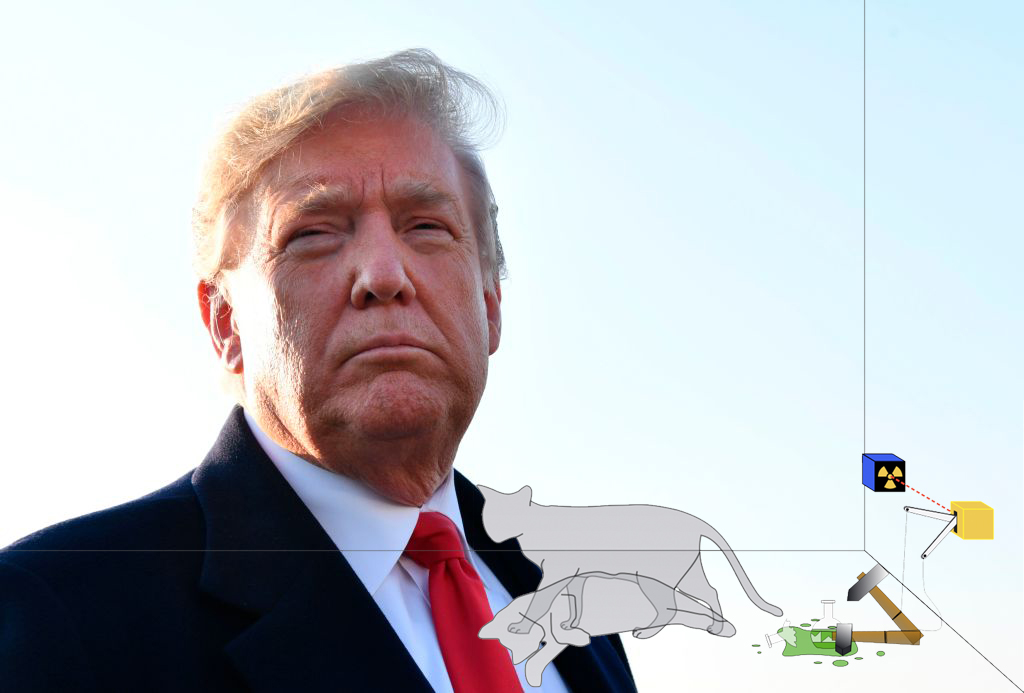Talmudic tradition establishes a practice of providing a variety of voices and understandings, which could lead to multiple versions of any position. Or as the old saying goes, ‘ask two Jews, you’ll get three opinions.’
Recently, in the aftermath of the massacre at the Tree of Life Synagogue in Pittsburgh and the earlier bomb-spree scare, I had the opportunity to test the validity of this famous aphorism, when as a libertarian-conservative Jew, adhering to classical liberal positions, who decided to cast his vote for Donald Trump in 2016 (after considering voting for Gary Johnson), I had a somewhat long and scorching email exchange with a liberal Jewish friend who also happens to be an enraged anti-Trumpist.
As expected, my buddy went on and on about how Trump’s rhetoric nurtures hate and fear mongering, providing legitimacy to racism and anti-Semitism, that he failed to renounce the white nationalists who support him, that his attack against ‘globalists’ like billionaire George Soros was another example of the use of a Jewish bogeyman in anti-Semitic propaganda, that the America First slogan he embraced had an anti-Semitic past. Trump may have not pulled the trigger in the Pittsburgh synagogue, but he helped has create the political atmosphere in which the deadliest attacks against Jews in American history have happened.
‘Trump is an anti-Semite?’ I responded. Is that the same President Trump who during an event marking the Jewish New Year (Rosh Hashanah) declared that his ‘connection to Judaism is also personal’ and that he was ‘a very proud father of a Jewish daughter, Ivanka, and my son-in-law, who I’m very proud of also — I will say that very loudly — Jared, and my several Jewish grandchildren, namely three beautiful Jewish grandchilds [sic] that I love.’ Not to mention that he was the first US President who recognised Jerusalem as the Jewish State’s capital city and who relocated the US embassy there, and has been pursuing an activist pro-Israel policy agenda, including by revoking the nuclear deal with Iran? Anti-Semite?
This debate will go forever, and my guess is that I will not be able to change the view of my liberal Jewish buddies, nor will they succeed in changing mine.
But then as I recalled President Trump’s initial comments that there were ‘very fine people’ among the neo-Nazis who chanted ‘the Jews will not replace us’ in Charlottesville and his refusal to repudiate the alt-right types who had endorsed him, I asked myself whether that was the time to come up with the proverbial third opinion: Perhaps one could be simultaneously a philo-Semite and an anti-Semite?
After all, this is a president who after a meeting with the head of the European Union (EU) pledged ‘to work together toward zero tariffs, zero non-tariff barriers and zero subsidies on non-auto industrial goods,’ while launching an aggressive trade war against China. He is the president whose economic advisor, Larry Kudlow, described him as a ‘free trader’ who seemed to enjoying his time at those infamous Davos annual meetings, while the same president’s trade officials have been pursuing a mercantilist set of policies.
He is the bête noire of the neoconservatives and their efforts to remake the Middle East, who has hired one of the leasing proponents of the Iraq War as his top national security adviser. He is being accused of colluding with Vladimir Putin, while signing on economic sanctions against Russia and cancelling a critical nuclear accord with Moscow. He has placed the concerns of the ‘forgotten’ men and women from the de-industrialised Midwest on his agenda while hiring billionaires and hedge-fund managers to work in his cabinet.
And there is a long list of examples that demonstrate what could be described as the Trump Paradox, of being able to be liberal and conservative, free trader and protectionist, internationalist and nationalist, a philo-Semite and an anti-Semite – and all that at the same time. Which raises an intriguing question: Is this a case of having a Schrödinger’s White House?
The reference here is to a thought experiment devised by Austrian physicist Erwin Schrödinger in 1935 to test an interpretation known as the Copenhagen Interpretation of quantum physics. The idea was that a quantum system like as atom can exist as a combination of multiple states that correspond to different possible outcomes, that it remains in superposition until it interacts with the external world and collapses into a definite state.
To illustrate the argument, Schrödinger asked us to imagine a scenario under which a cat is placed in a sealed box with a flask of poison, and his life or death depended on whether a decaying atom emits radiation, releases the poison, which then kills the cat.
Based on the Copenhagen Interpretation which implies the existence of a state of quantum supposition, the cat may be simultaneously both alive and dead, being linked to an event that may or may not happen.
While Schrödinger used this thought experiment to challenge the Copenhagen Interpretation, and illustrate what he considered to be the absurdity of having a dead-and-alive cat, other physicists applying other interpretations to quantum physics do not reject the idea of a state of consciousness that involve the simultaneous perception of a live and a dead cat. For example, the cat is alive and dead – but in different parts of the universe.
In any case, the Schrödinger’s Cat paradox demonstrates the way in which quantum physics challenges the traditional way we see our world, including our society and politics.
Without going into a long discussion of the issue, quantum physics, unlike classical physics, assumes that there are limits to the precision with which quantities can be measured that considerations of uncertainty and ambiguity have to be incorporated.
Classical physics assumes that all objects have well-defined properties, and therefore cannot be in contradictory states at the same time; that things happen in the world through causation; and that meaning derives from absolutes.
Quantum physics, on the other hand, is based on the notion that there are no casual certainties, but correlations and probabilities; objects can have contradictory properties, or ‘x’ and ‘not-x’ at the same time; and meaning is dependent on changing realities.
Some social scientists have suggested that we need to replace what they considered to be an outdated view of politics and economics that reflects the principles of Newtonian physics, with new quantum-politics or quantum-economics schools of thought that may help us make sense of a lot of phenomena that does not seem to fit into our traditional framework of analysis that assumes, for example, that you can be either a nationalist or a globalist, an anti-Semite or a philo-Semite and that an American president who is pursuing policies that does not make sense to your renowned political scientist or veteran Washington pundits, does not know what he is doing, and that like Schrödinger’s Cat he could not exist. Perhaps our new quantum president will prove them wrong. Or maybe not.


















